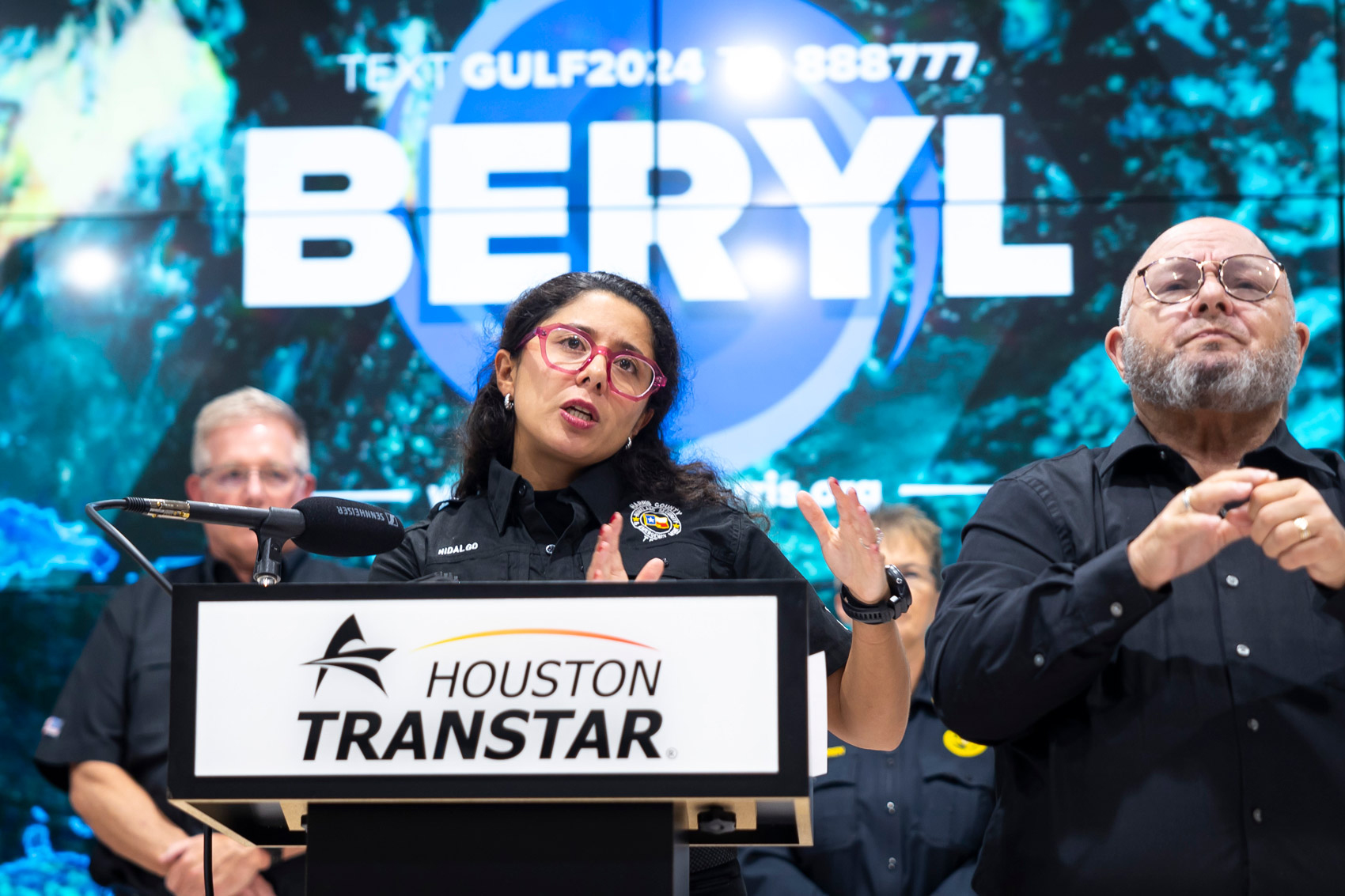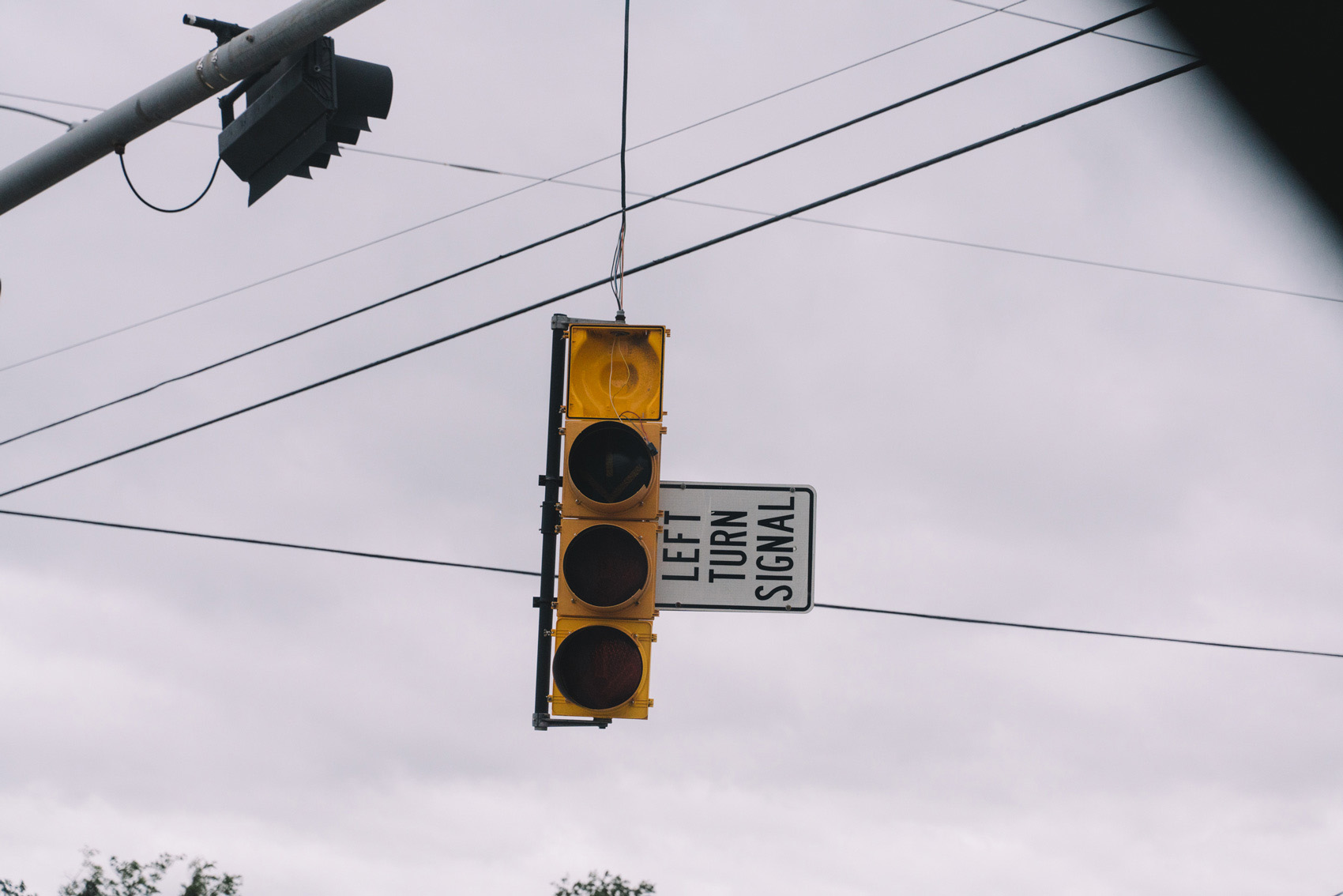Early Monday, Esmerelda Medina was startled awake to the sounds of wind and rain screaming outside her bedroom window. She pulled herself from under her sheets and immediately stepped into a puddle near the bed. Blearily she thought the dog’s water bowl had tipped over. If only.
Her bedroom floor was covered with about 6 inches of water. Tropical Storm Beryl – which had made landfall earlier in the morning as a Category 1 hurricane – had flooded her bedroom, her parents’ bedroom, the kitchen, the backyard, front yard and ditches at her family’s northeast Houston home.
She began grabbing things off the floor and throwing them onto tables, onto her bed – even as water continued to pour in from outside through the house’s walls.
“I barely slept last night,” said Medina, 17. “We were trying to save everything we could as fast as we could.”
Medina is one of many in Houston who woke up to severe flooding, power outages and property damage from the city’s second major storm this summer. Beryl, which came ashore near Matagorda as a Category 1 hurricane before moving from the Houston region as a tropical storm, brought 80-mph wind gusts and dropped upwards of 11 inches of rain, killing at least four people and leaving more than 2.3 million CenterPoint customers without power.
In some neighborhoods of northeast Houston, however, the impact from storms like Beryl leave lasting effects because of poor drainage infrastructure. Climate advocates and residents say open ditch drainage systems on the city’s northeast side – which make up about 80 percent of the open ditches throughout Houston – historically have been neglected by the city, leaving residents like Medina with flooded homes and yards during rain events.
more beryl coverage
Where to go, who to call if you need help after Hurricane Beryl
by Angelica Perez
The city approved $20 million in the 2023 budget cycle for the maintenance of drainage ditches in these communities after climate disaster nonprofits, including West Street Recovery and Northeast Action Collective, pushed for change. The fund is meant to return the ditches to their original level of efficiency by removing debris and digging the channels deeper into the ground. That funding was approved again in 2024.
Meanwhile, an appeals court in April ruled the city violated its charter by shorting $100 million to a fund that is supposed to be dedicated to drainage projects. The city is appealing that ruling.
“The main source of drainage infrastructure and equity in Houston comes from the difference in maintenance between open ditches and underground drainage,” said Alice Liu, co-director of communications, organizing and disaster preparedness for West Street Recovery. “The divide in the drainage system falls overwhelmingly along racial and class lines here.”
Still, advocates, like Liu, worry the promised investment is not enough nor permanent. That concern is amplified when properties, such as Medina’s, are found under water during storms, their drainage ditches clogged and spilling over onto the street and their yards.
“This storm is a good example of what sort of investment we still need,” Liu said.
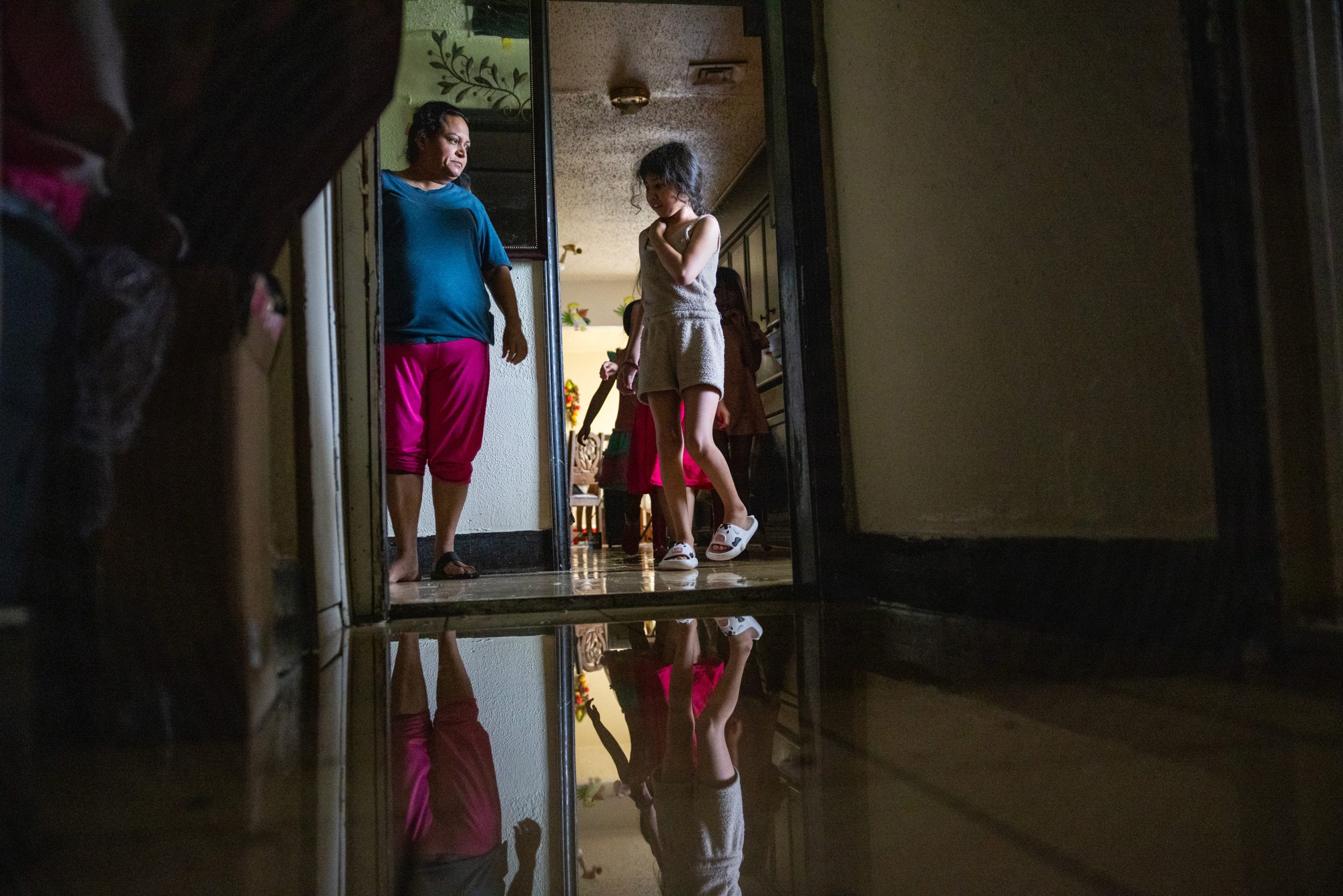
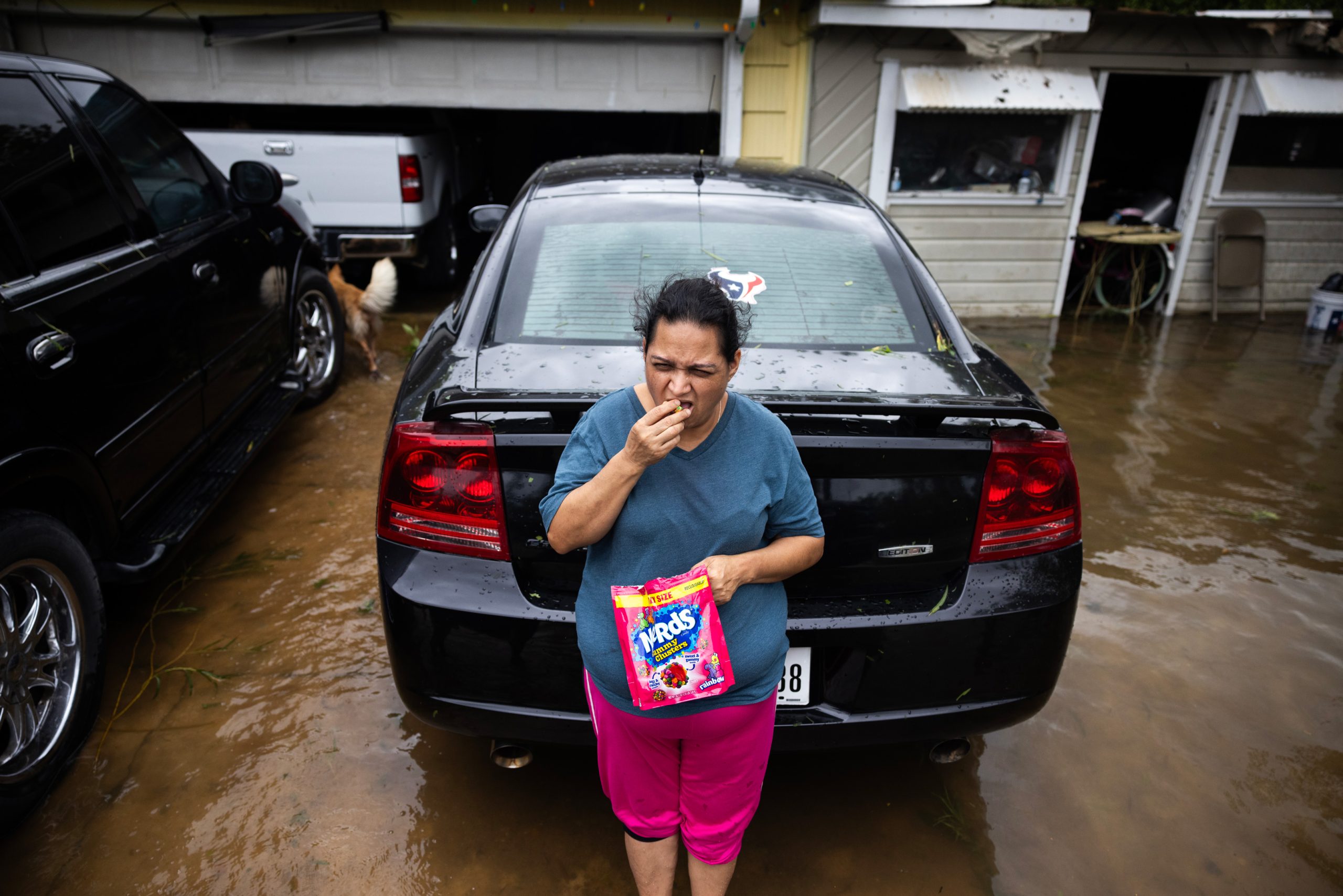
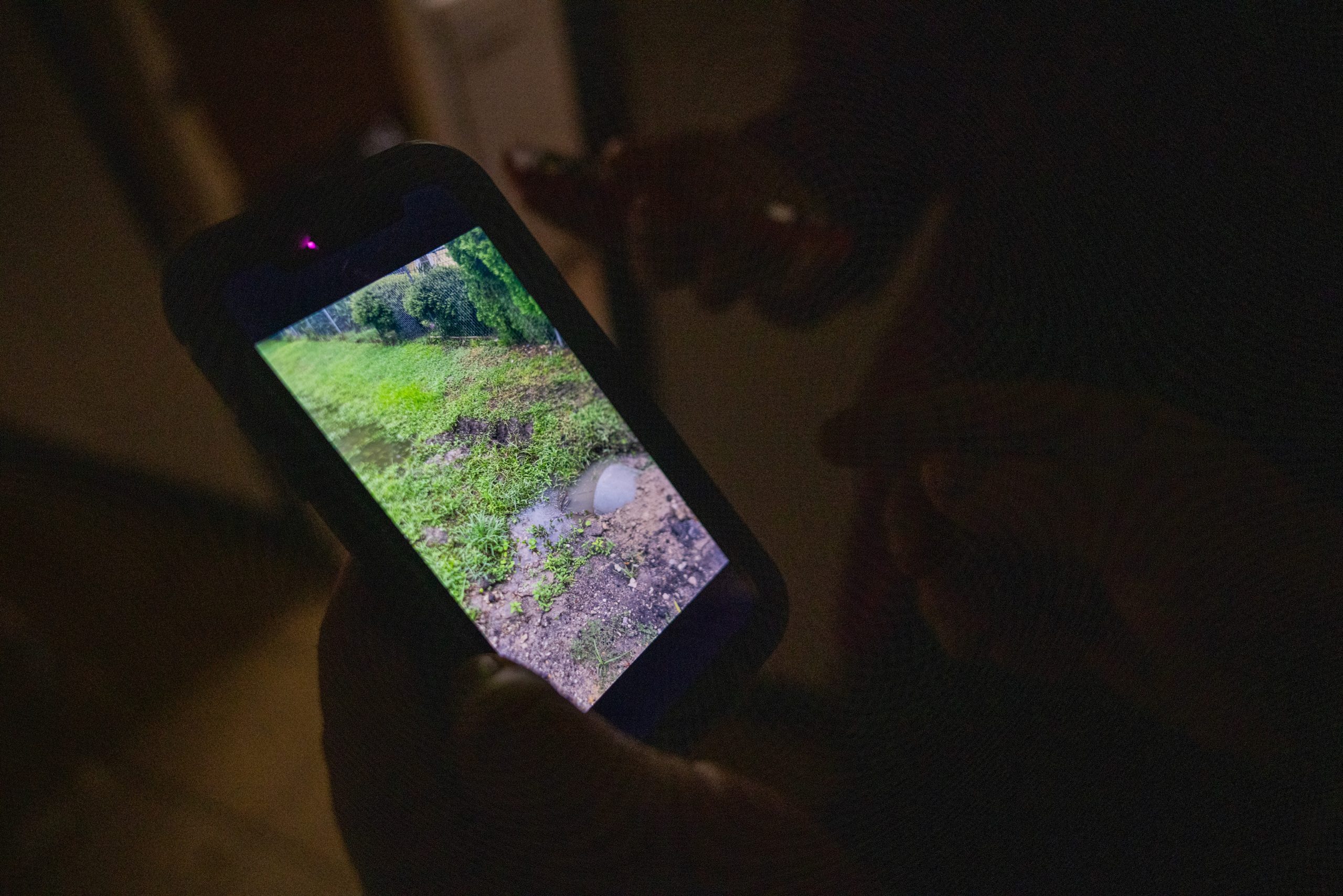

After the storm
The Medina family has lived in northeast Houston for more than a decade. When Hurricane Harvey hit in 2017, 5 feet of flood water sat in their home for hours, warping the floorboards and stinking in the heat.
Veronica Medina, Esmerelda’s 47-year-old mother, remembers Harvey so vividly she stayed up all night during Beryl. When 5 a.m. arrived and stormwater began pooling in the house, everyone in the house jumped into action, grabbing whatever they could.
At 2 p.m. Monday, the family waited for the water to dry up, the ditches to drain. There was not much else they could do.
“These ditches are always the same,” Medina said, gesturing to her flooded property. “I’m not surprised it ended up like this.”
more beryl coverage
CenterPoint says infrastructure ‘more heavily impacted’ by Hurricane Beryl than anticipated
by Clare Amari
She said the city had come by briefly to address the flooded ditch, but she didn’t see any difference.
West Street Recovery also would come by later to help the family. The organization offered a hotel, but Medina was concerned about leaving her place alone for the night.
“All we can do is wait for it all to dry,” she said.
In 2001, the city moved the responsibility of maintaining the open ditches from city crews to homeowners, leaving the ditches in primarily minority and lower-income neighborhoods without property maintenance for years. In response to that and other climate disasters, West Street Recovery and Northeast Action Collective created resiliency hubs throughout communities for residents to find resources and assistance in times of need.
Regina Johnson, also in northeast Houston, has one such hub – a recently built storage shed at the back of her property with supplies, ranging from first aid kits, to fans and batteries. Throughout Monday, neighborhood residents stopped by to pick up supplies. Most in the community lost power after Beryl. Flooding was minor.

“Community members have been calling me all day for supplies,” Johnson said. “I just say we have it here, you can come here. We have snacks, we have water, we have air conditioning. Take a second.”
Vicky Solco, 60, and her husband Al James, 68, stopped by late afternoon, grabbing a fan, a battery and lantern. The couple’s home did not flood, but they said they are always worried about it and what kind of damage the storms can bring.
“It’s exhausting,” James said. “This just happening again and again.”


